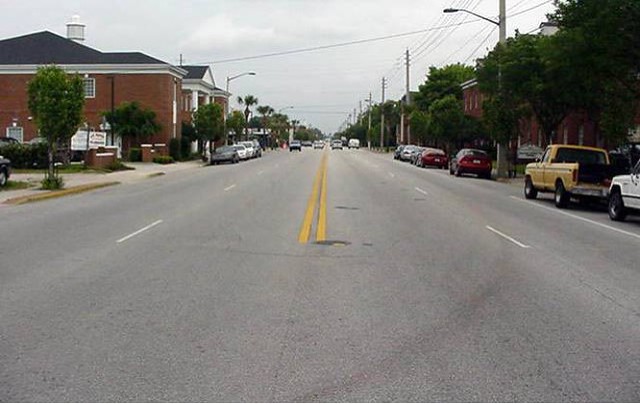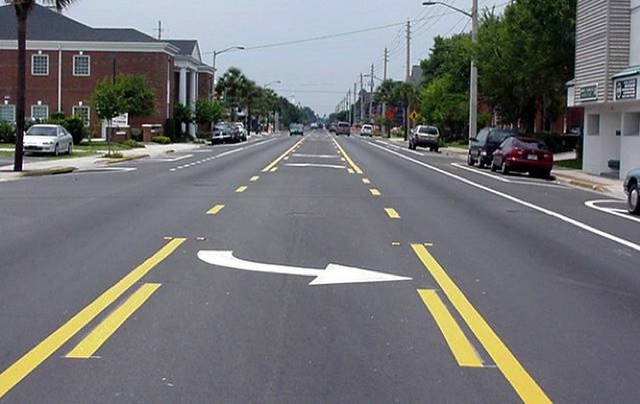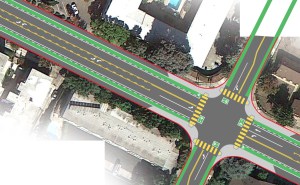What is a road diet? It’s a reduction in the number of car lanes on a street, done with an aim to improve multimodal access and safety, and to make the street more livable. California Street and Shoreline Boulevard are two possible candidates for road diets, as their traffic counts do not warrant the existing number of lanes. The excess car space encourages drivers to speed well above the posted speed limit of 35mph, which intimidates pedestrians, bicyclists, and persons who live along the street.
Before + After

Similar to what California Street looks like today, this is what Edgewater Dr. in Orlando Florida looked like before the road diet. Source: Complete Streets

The same street after a road diet. Notice the wide, attractive, bike lanes, better sidewalks, lighting, and new center turn lane.
On California Street, the street would have 2 car lanes, a center turn lane, and improved bike lanes, along with new sidewalk curb extensions and additional crosswalks. New street trees and pedestrian-scale streetlights could further enhance the aesthetic and make California Street more of a place than just a through-way.

Birds-eye view of what California Street and Escuela Ave could look like with a road diet, wider green-painted bike lanes, sidewalk curb extensions, and bike left turn boxes. Escuela Ave is shown with bike lanes as well.
Most of Shoreline Boulevard and its connecting street, Miramonte Avenue, have 4 lanes, with the exception of a 6-lane stretch between El Camino Real and Central Expressway. A product of 1960’s growth, the road sliced through an older neighborhood, demolishing dozens of homes. While crosswalks and landscaping were included in the original project, the existing 6 lanes are excessive and this particular section of Shoreline has been identified as a road diet candidate in Mountain View’s Draft Pedestrian Master Plan.
Unlike the California Street road diet which would reduce the number of lanes from 4 to 3, the Shoreline Boulevard road diet would reduce the number of lanes from 6 to 4. This would reduce speeding and noise while making the street easier to cross. The extra space could accommodate safer bike lanes, rain gardens, and sidewalk curb extensions.

